Continued growth in the U.S. wind industry requires trained and qualified workers to manufacture, construct, operate, and maintain wind turbines. Additionally, the nation will continue to need skilled scientists and engineers who can develop the next generation of wind power technologies.
WETO addresses the wind industry’s workforce needs through various targeted investments. For more information, see the WETO projects map and select "Program Area: Workforce Development, Education, and Stakeholder Engagement."
The U.S. Department of Energy (DOE) also works with other federal agencies that are heavily invested in training and education—such as the Smithsonian, the National Science Foundation, and the Department of Education—to fill existing gaps and ensure that federally sponsored training activities and educational programs are appropriately targeted and complementary.
Collegiate Wind Competition
The U.S. Department of Energy Collegiate Wind Competition challenges undergraduate students from multiple disciplines to design and construct a wind turbine according to set specifications. The students investigate innovative wind energy concepts, gain experience designing, building, and testing a wind turbine, develop a business plan, and increase their knowledge of issues facing the wind industry in the United States. The Collegiate Wind Competition is designed to attract engineering, business, and science students to wind-related fields, provide them with practical knowledge and wind experience, and showcase tomorrow’s promising workforce to industry leaders.
National Wind Workforce Assessment
The U.S. National Wind Workforce Assessment examines the current state of the U.S wind energy industry workforce and identifies approaches that can help bolster future workforce growth. This report is an update and expansion of the 2019 report, The Wind Energy Workforce in the United States: Training, Hiring, and Future Needs. In these reports, researchers identified a notable disparity: students are graduating with degrees specific to the wind industry, but they're having difficulty getting hired.
To meet the growing demand and reduce the workforce gap, the U.S. National Wind Workforce Assessment highlights ways to address the need for increased awareness about wind energy opportunities such as increasing outreach with educational and training institutions and creating pipeline and apprenticeship programs.
Offshore Wind Workforce Assessment
The U.S. Offshore Workforce Assessment analyzes future U.S. offshore wind workforce growth to help the country reach the Biden administration's goal of installing 30 gigawatts of offshore wind energy capacity by 2030. The report suggests that the U.S. offshore wind energy industry will need to develop their domestic workforce, especially within the manufacturing sector. The report identifies actions, including increasing training opportunities that could help the country meet growing demand for offshore wind energy jobs. To meet that demand with enough supply, or number of workers, the report names opportunities such as hiring from adjacent industries.
On-Demand Wind Training
A training course called Selecting, Implementing, and Funding Distributed Wind Systems in Federal Facilities is available through the Whole Building Design Guide's Continuing Education webpage and is accredited by the International Association for Continuing Education and Training. The course is primarily targeted at federal agency staff members responsible for renewable energy project development so they can make fact-based, data-driven decisions about whether a distributed wind project would be appropriate and cost effective for their agency. It was developed by PNNL with support from NREL, on behalf of DOE’s Federal Energy Management Program.
Wind Career Map
The Wind Career Map was developed to show the broad range of careers and skillsets across the wind industry and highlight routes of advancement between jobs within and between wind energy sector. The tool also shows current or prospective job seekers additional information such as wages, experience and skill expectations, and educational requirements for mapped occupations.
The Wind Career Map was developed by DOE’s National Renewable Energy Laboratory with input from experts from the wind industry in order to assist in the recruitment, training, and advancement of skilled workers in wind energy related occupations.
Currently, wind energy supports more than 100,000 U.S. jobs, and wind turbine technician is one of the nation's fastest growing occupations.
WINDExchange
WINDExchange is the DOE Wind Energy Technologies Office's platform for disseminating credible information about wind energy. Find higher education and continuing education wind programs or training located throughout the United States with the Wind Energy Education and Training Programs map.
Stay informed by receiving the latest wind energy news, events, and updates.
Workforce Development and Education News
-
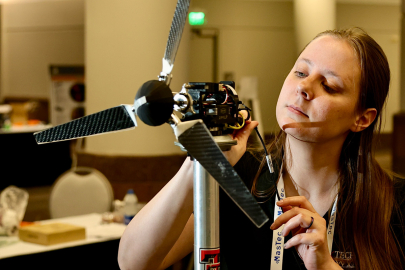 The 12 finalist teams will compete throughout the spring and present their work during the American Clean Power Association's CLEANPOWER 2025 Conference and Exhibition.
The 12 finalist teams will compete throughout the spring and present their work during the American Clean Power Association's CLEANPOWER 2025 Conference and Exhibition. -
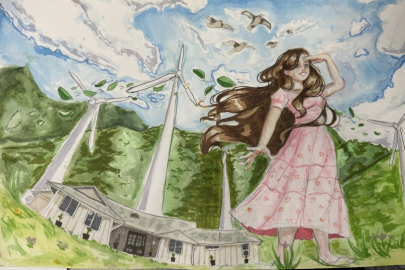 WETO invites students from kindergarten through 8th grade across the United States to create artwork on the theme “Beautiful Wind Energy” for the National Wind Energy Art Challenge.
WETO invites students from kindergarten through 8th grade across the United States to create artwork on the theme “Beautiful Wind Energy” for the National Wind Energy Art Challenge. -
 DOE announces nearly $2 Million to support offshore workforce training programs to promote good-paying jobs in a fast-growing sector in communities across the country
DOE announces nearly $2 Million to support offshore workforce training programs to promote good-paying jobs in a fast-growing sector in communities across the country -
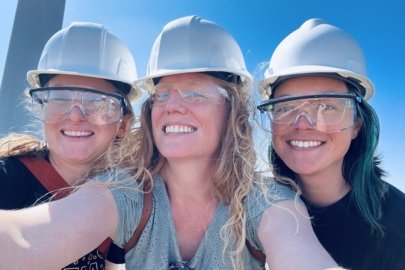 The wind energy workforce is made up of a wide range of people and skills. Learn about the career journey of PNNL lab program manager Alicia Mahon.
The wind energy workforce is made up of a wide range of people and skills. Learn about the career journey of PNNL lab program manager Alicia Mahon. -
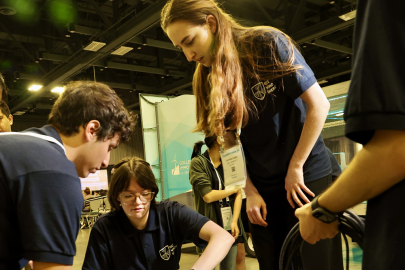 During the first half of the 2024–2025 school year, 35 teams will participate in the 2025 Collegiate Wind Competition to design floating offshore wind energy technology.
During the first half of the 2024–2025 school year, 35 teams will participate in the 2025 Collegiate Wind Competition to design floating offshore wind energy technology. -
 Angela Wilkins is a union worker helping to manufacture wind turbine generators at the Ingeteam plant in Milwaukee. The growth of U.S. clean energy manufacturing has afforded her a secure job with good pay, great benefits, and nice people to work with.
Angela Wilkins is a union worker helping to manufacture wind turbine generators at the Ingeteam plant in Milwaukee. The growth of U.S. clean energy manufacturing has afforded her a secure job with good pay, great benefits, and nice people to work with. -
 An Idaho National Laboratory report takes the first comprehensive look at cyberattack risks that could jeopardize U.S. wind energy systems and real-world events that have affected wind energy systems and organizations around the world.
An Idaho National Laboratory report takes the first comprehensive look at cyberattack risks that could jeopardize U.S. wind energy systems and real-world events that have affected wind energy systems and organizations around the world. -
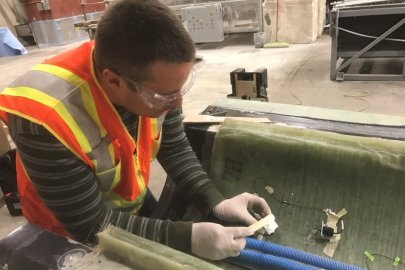 While studying mechanical engineering at the University of Texas in Austin, Paquette became interested in structural components and composite materials. Although he originally planned to pursue work in the aerospace industry, he jumped at the opportunity to work at Sandia on wind turbine blades—the largest composite structures in the world.
While studying mechanical engineering at the University of Texas in Austin, Paquette became interested in structural components and composite materials. Although he originally planned to pursue work in the aerospace industry, he jumped at the opportunity to work at Sandia on wind turbine blades—the largest composite structures in the world. -
The Wind Energy Technologies Office (WETO) has invested in blade and drivetrain testing facilities since the 1990s, providing crucial knowledge and expertise to the ongoing expansion of commercial wind power—both domestically and globally.
-
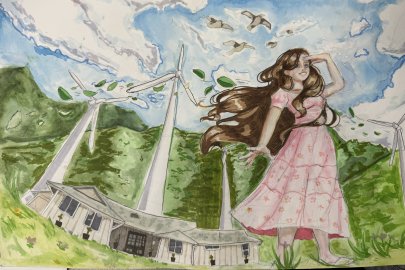 With the support of DOE, KidWind called upon kindergarten–8th grade students from around the nation to create artwork based on the theme of “Beautiful Wind Energy.” Check out the artwork of the 18 winners!
With the support of DOE, KidWind called upon kindergarten–8th grade students from around the nation to create artwork based on the theme of “Beautiful Wind Energy.” Check out the artwork of the 18 winners!
Workforce Development and Education Publications
-
 The U.S. National Wind Workforce Assessment examines the state of the U.S wind energy industry workforce and identifies ways to address workforce gap.
The U.S. National Wind Workforce Assessment examines the state of the U.S wind energy industry workforce and identifies ways to address workforce gap. -
 First-of-its-kind study that examines future U.S. offshore wind workforce growth and identifies future workforce development needs.
First-of-its-kind study that examines future U.S. offshore wind workforce growth and identifies future workforce development needs.


